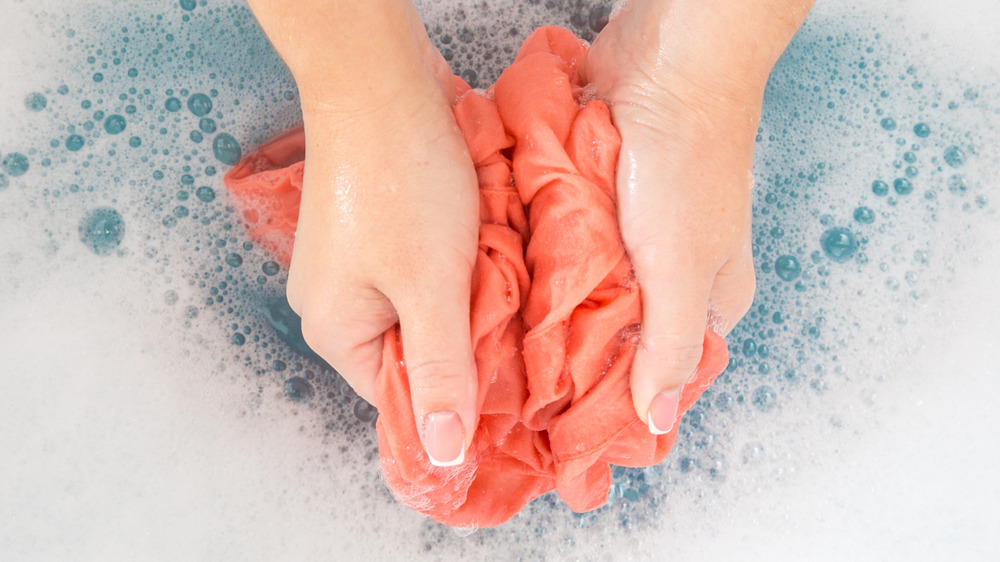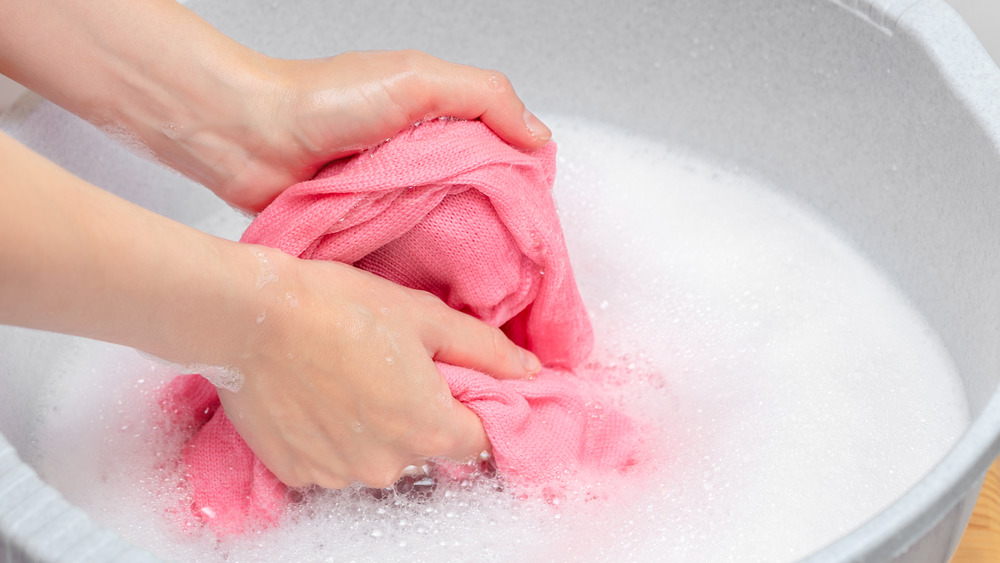The Mistake You're Making While Hand Washing Your Clothes
If you're paying attention to the fine print on clothing tags when you do your laundry, you may notice a little icon of a hand in a tub: this means to hand-wash and not just fling the garment into the washing machine with everything else. This said, it also doesn't mean to lump all hand-washed items together either. It's vitally important to consider what type of garment it is and the type of fabric before you take the time to wash it by hand. Doing otherwise could end up ruining the items you were hoping to properly care for, PureWow explains.
Take bras, tights, and pantyhose for instance. According to Freshpair, these should be washed by hand. For bras, use an alcohol-free detergent in lukewarm water every two to three wears. Let soak for up to an hour, rub fabric together gently to remove any dirt, and then rinse with cool water until the water runs clear. Remove any excess moisture by pressing with a towel, and then hang dry.
Hand-washing tights and pantyhose will help them to last longer as well, but require a different approach than bras. The Laundress, a New York-based provider of nontoxic laundry and home-cleaning products, recommends pre-treating any stains on tights or pantyhose, using a vinegar soak to get out any funky smells, then washing the garments in tepid water and a delicate detergent. Such items should soak for at least 30 minutes.
Hand washing cashmere and wool is better than a dry cleaner visit
Cashmere and wools are actually better washed by hand than at the dry cleaners, this again according to the Laundress. The reason being is that harsh solvents and detergents used by dry cleaners will degrade the fabric. Instead, wash cashmere and wool items at home in cool water, as warm water will cause shrinkage.
Also, since wool and cashmere are heavier fabrics, hand-wash only one or two items at a time. Use wool-safe detergent, like Woolite, and gently agitate the item in soapy water, rinse until the water runs clear, press out excess water, and then lay flat to dry. Don't be concerned if color bleeds into the water either; that's just the yarn releasing excess dye. The Laundress explains that this loss of color won't be noticeable once dry.
For many garments, if the tag says dry clean, it's generally okay to treat them at home by hand, according to Press Cleaners. Certain fabrics and designs though are truly "dry clean only,", such as suede and viscose, as well as garments with pleats and structured parts like shoulder pads. It really comes down to paying attention to what the laundry tag says in order to avoid common mistakes when hand-washing clothes at home. Be sure to find out the material type and check this information against some basic do's and don'ts.

